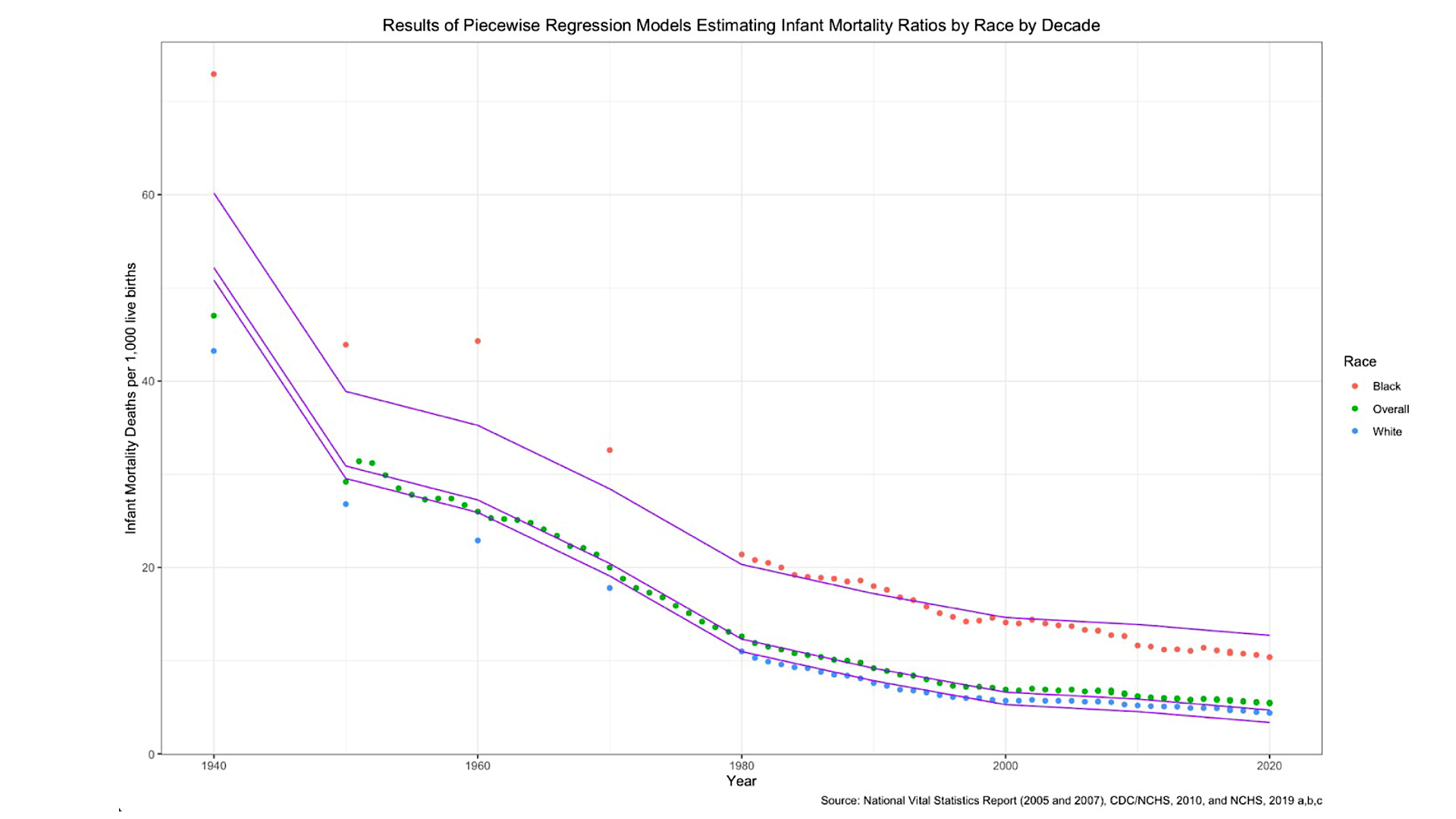
In the summer of 1949, the Journal of Negro Education (Volume 18, Number 3), housed at Howard University, published a special volume on health. It included 11 empirical articles that drew on vital statistics, administrative data, health care supply data and other sources to examine maternal and child health, infectious disease, non-communicable disease, and mental health conditions in the Black population. Among the authors are a statistician from the Metropolitan Life Insurance Agency, the U.S. Surgeon General, a professor of medicine at Howard University, Washington D.C.’s health commissioner, a Yale professor of public health, a biostatistician in the Public Health Service, and the director of research for the NAACP.
The articles in this volume, built on the work of scholars such as W.E.B. Du Bois, laid bare evidence of the impacts of racial discrimination on health outcomes. Included in several of the articles are analyses of state, regional, and rural-urban differences in outcomes between Blacks and whites.
One of the most striking things about this volume is how enduring many of the findings are today. For instance, Roemer (1949) points to a two-fold difference in infant mortality between Blacks and whites in 1947, and a three-fold difference in maternal mortality. Also striking is the tone of these articles: despite the clear and precise analysis, one senses the frustration of the authors in needing to present the case for addressing racism as a determinant of health.
At the same time, the authors reported being hopeful that with the end of World War II, President Harry Truman’s determination to secure national health insurance and recognize the contributions of Black soldiers to the war effort, would lead to meaningful changes to the architecture of racism.
Clearly, hopes for swift progress in this area have not been borne out. In the United States, “with all deliberate speed” has been at a snail’s pace. An enormous body of literature documenting the scope of health disparities, investigating their causes and evaluating efforts to eradicate them has established their pernicious persistence — and the role of structural racism as the root cause of the social determinants of health. Notably, in addition to structural racism, the scholars in this volume point to many other social determinants of health, documenting how these disparities are driven by food insecurity, inadequate or unstable housing, limited access to health care, economic instability, and poor education.
Over the course of the year, we have been reviewing the 16 recommendations these authors made, tracking federal policies enacted after these scholars wrote, and trying to understand how such policies have contributed to the narrowing disparities. In presenting our work at the American Public Health Association in November, we noted that federal health insurance programs, legislation to provide funds for building hospitals and community health centers, the 1964 Civil Rights Act, and the strengthening of state public health departments have all contributed to absolute improvements over time and narrowed disparities — but they have failed to eliminate them.
For instance, our data team, headed by Adrian Harris, who is a statistical analyst with the GPH Center for Anti-racism, Social Justice & Public Health, used a piecewise regression model (Figure 1) to assess the narrowing of racial disparities in the infant mortality rate, while also demonstrating how they persist as progress has stalled.
Tragically, many of the issues documented in this volume remain part of the lived experience of African Americans, and many of the recommendations made more than 70 years ago to address these problems remain depressingly relevant today. Still, the body of research that addresses and condemns racism and anti-Blackness in health indicates that the work introduced by these scholars still resonates, decades later. That work inspires us to join the fight to combat, and ultimately eliminate, race-based disparities both within and outside the context of health.


Nelia Ekeji, BA
MPH Student

Ian Flowers, BA
MPH Student